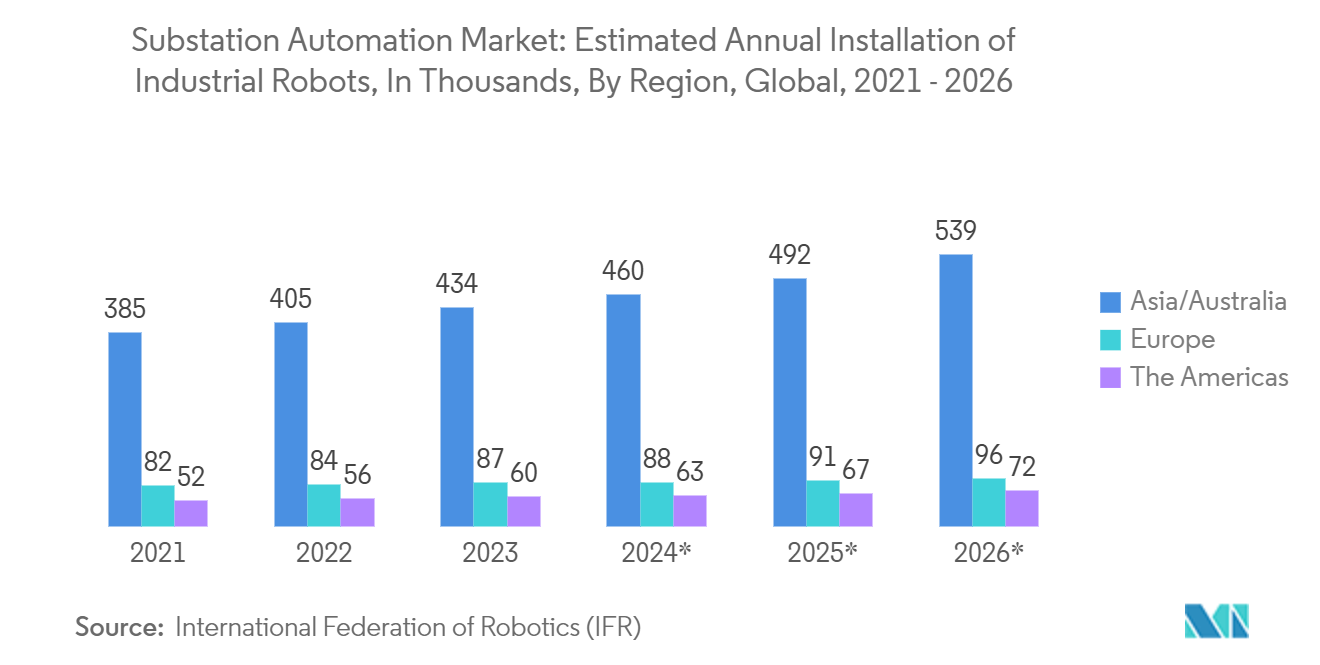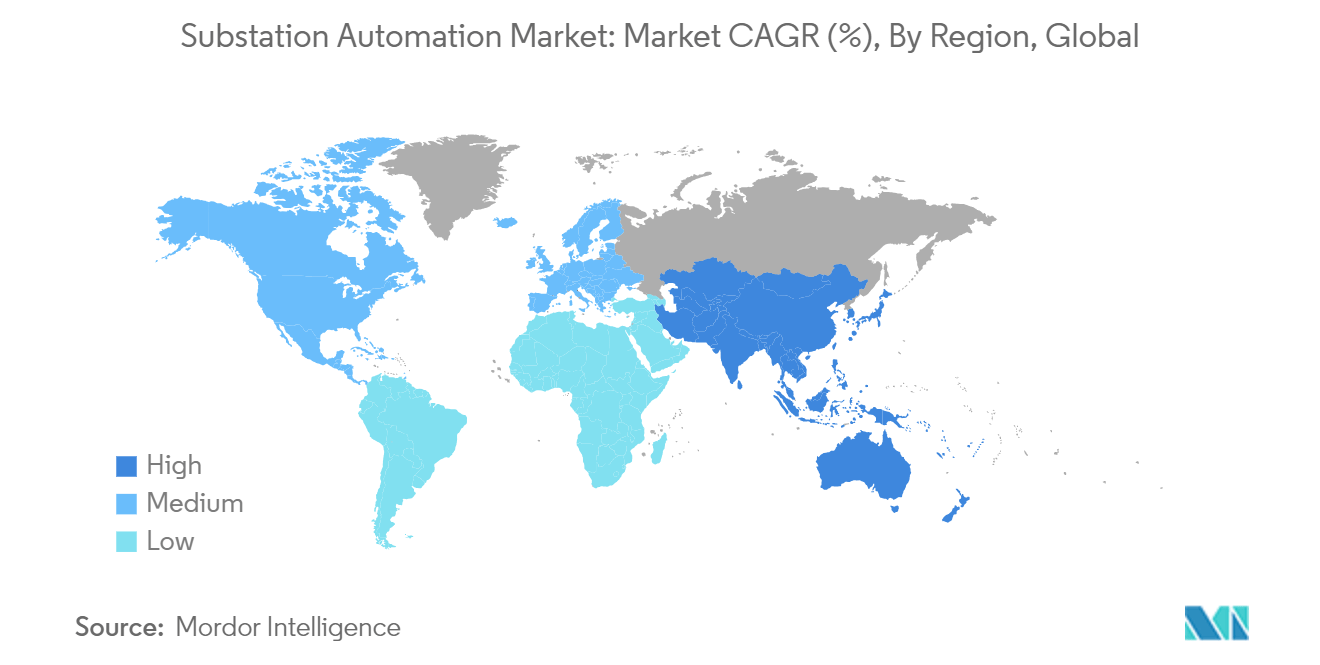Market Trends of Substation Automation Industry
The Industrial Sector is Expected to Witness Significant Growth
- Substation automation systems are commonly utilized in industries where energy availability is of utmost importance, including oil and gas, transportation, mining, steel, and others. Employing substation automation systems can benefit companies by preventing power outages, minimizing maintenance expenses, enhancing plant productivity, promoting worker safety, and more.
- Due to the increasing demand from various industries such as utility, steel, mining, and others, suppliers of substation automation equipment are expected to benefit significantly in the future. In the metal and mining industry, it is utilized to monitor and regulate power distribution systems. The oil and gas industry also gains advantages from substation automation as it allows for remote monitoring and control of electrical infrastructure.
- In addition, transportation industries rely on this service to manage power systems in their facilities effectively. Furthermore, other sectors use this application for efficient power management and control.
- The emergence of industry 4.0 trends has significantly enhanced the demand for automation and robotics solutions for different industrial applications, creating a favorable ecosystem for the market’s growth by influencing the electricity demand. For instance, according to the World Robotics Report 2023 by the International Federation of Robotics, the annual installation of industrial robots is anticipated to witness growth globally. However, demand across the Asia-Pacific region is expected to remain the highest, growing from 385 thousand units in 2021 to 539 thousand by 2026.
- Artificial intelligence is poised to transform the industrial substation automation market significantly. AI drives significant growth and innovation through predictive maintenance, improved decision-making, and optimized integration of renewable energy sources. A survey released by IBM in 2024 revealed that 74% of surveyed industrial companies have either already implemented or are considering AI integration in their operations. With industrial users and renewable energy providers increasingly embracing AI solutions, the substation automation market is poised for significant growth, solidifying AI's role in shaping the future power grid.

Asia-Pacific is Expected to Witness the Fastest Growth
- Asia-Pacific will experience robust growth in the future, primarily driven by the rising need for rural electrification and the adoption of renewable energy sources, contributing to the enhanced safety and efficiency of stations. Moreover, the presence of companies dedicated to promoting top-quality electronic products will further bolster the progress.
- The growth of smart grids in the market is driven by factors such as the rising demand for efficient electricity transmission, the need for reduced operations and management costs for utilities, and the objective of lower power costs for consumers. Moreover, the growth of smart grids in substation automation is fueled by the increasing integration of large-scale renewable energy systems and enhanced security measures.
- To cater to the diverse electricity requirements of end users, a smart grid is an electricity network that utilizes digital and other advanced technologies to effectively monitor and regulate the transportation of electricity from different sources of generation. Smart grids aim to optimize the functioning of every element within the system by coordinating the needs and capabilities of generators, grid operators, end users, and stakeholders in the electricity market. This approach enhances the system's reliability, resilience, flexibility, and stability while reducing costs and environmental impacts.
- China is recognized as the largest market globally for power transmission and distribution (T&D) and is also on track to become a significant adopter of smart grid technology. This aligns with its commitment to reducing carbon emissions and promoting sustainable development. China aspires to become a global leader in electrical power equipment by 2025, as stated in its national strategy outlined in the Technology Roadmap (2017) of the Made in China 2025 program. The program strongly emphasizes innovation and technology, with substantial funding allocated toward supporting its development.
- Moreover, India has taken the lead in mobilizing global action for long-term development. To combat climate change, the country has taken significant steps to reduce its national carbon footprint and reliance on fossil fuels. As a result, it is only natural that the country accelerates its efforts toward smart metering and the digitalization of its grid networks. India has set a goal of achieving net zero emissions by 2070 and obtaining 50% of its energy needs from renewable sources by 2050, raising the possibility of the national electricity grid being developed to handle demand-side flexibility and integration variability.


